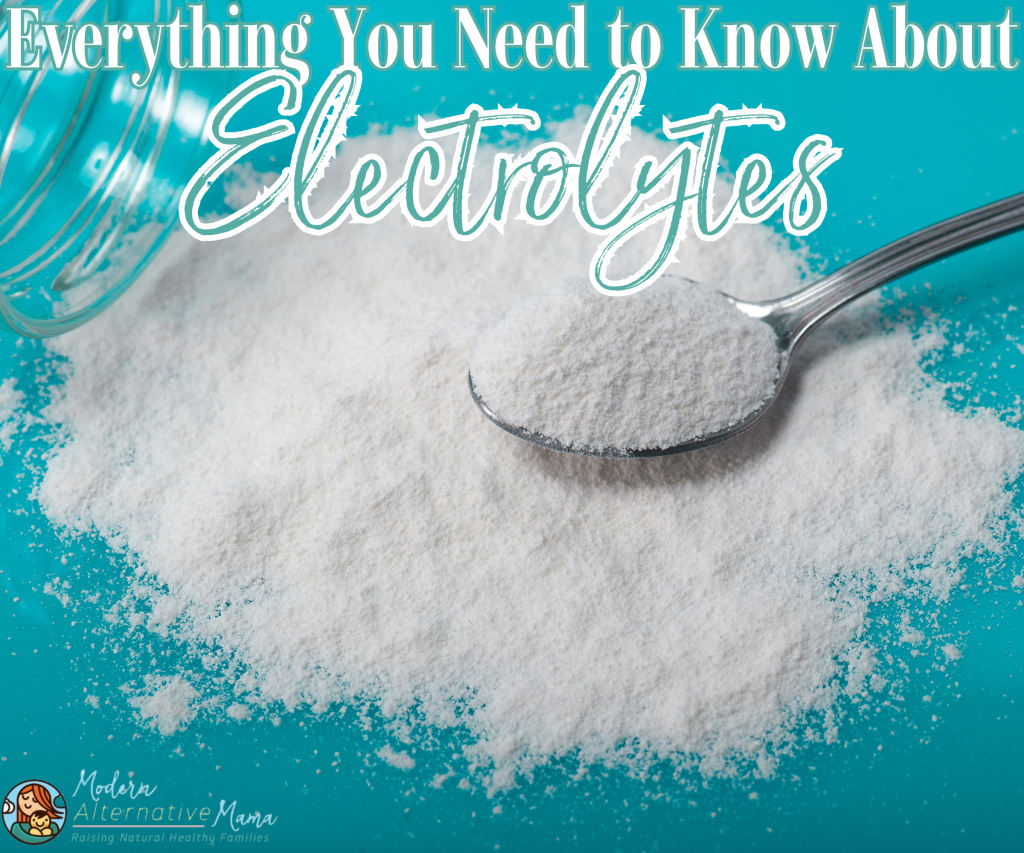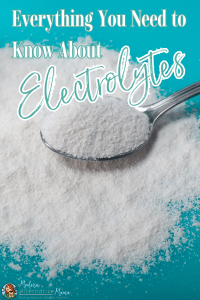Electrolytes. We’ve all heard of them, and we’ve all consumed them. Whether it’s sports season or flu season, electrolyte sports drinks will likely be passed around, but those drinks aren’t healthy. If you read our blog, The Dangers of Sports Drinks, you know they’re full of artificial colors, sweeteners, and other junk, canceling their “health benefits.” You want real hydration.
Of course, drinking water is important for hydration, and countless sources are recommending different water intakes. Personally, my goal is half my weight in ounces. I prefer this method because I am plant-based, so most of my food is already high in water. So if you follow this water recommendation and weigh 150 lbs, the goal should be 75 ounces of water daily.
Proper hydration is so much more than just drinking water. We sweat and lose minerals throughout the day, especially during illness and sports; electrolytes are the easiest way to replenish them.
Everything You Need to Know About Electrolytes
Electrolytes are far beyond the mainstream recommended unhealthy sports drinks. Instead, you want real hydration through natural electrolytes. Electrolytes are typically minerals with a naturally-occurring positive or negative electrical charge when dissolved in water that helps regulate bodily functions (1). Not all minerals are electrolytes, but almost all electrolytes are minerals.
Of course, there are several natural minerals, and not all are beneficial. We have essential minerals (required by the human body), non-essential minerals (not required by the human body), and even toxic minerals. Some essential minerals that perform as electrolytes are sodium, calcium, potassium, chloride, phosphate, and magnesium (2). Let’s discuss each of these minerals more in-depth.
Sodium is a mineral that aids nerve impulses, contracts and relaxes muscles, and maintains the proper balance of water and minerals. The human body requires at least 500 mg of sodium daily to function properly (3). Depending on your age and stage of life, the recommendation for sodium intake is between 150 and 1,500 mg (4).
Calcium is stored mainly in your bones but is also found in the blood. Calcium is essential for the function of many enzymes, blood clotting, muscle contraction, normal heart rhythm, as well as the formation of bones and teeth (4). Depending on your age and stage of life, the recommendation for calcium intake is between 200 and 1,300 mg (5).
Potassium, like sodium, is an electrolyte as well as a mineral that’s important to many bodily functions like relaying messages between your brain and body, regulating heart and muscle contraction, reducing blood pressure, reducing water retention, protecting you against strokes, kidney stones, and even osteoporosis (6). Depending on your age and life stage, the potassium intake recommendation is between 400 and 3,400 mg (7).
Chloride helps regulate the amount of fluid and types of nutrients going in and out of the cells (8). Depending on your age and life stage, the chloride intake recommendation is between 300 and 2,300 mg (4).
Phosphate has several functions in the human body, including bone and teeth mineralization, cellular functions, urinary buffer, and more (9). Phosphate is sometimes inaccurately referred to as phosphorus. Phosphorus is an element only present as part of organic and inorganic compounds; it’s not in the human body. Phosphate is an anion (negatively charged ion) in the human body (10). Depending on your age and stage of life, the recommendation for phosphate intake is between 100 and 2,300 mg (11).
Magnesium is responsible for more than 300 bodily functions, so I cannot go over all of them, but to name a few functions involved with magnesium are protein synthesis, blood glucose control, blood pressure regulation, and muscle and nerve function (12). Depending on your age and stage of life, the recommendation for magnesium intake is between 30 and 420 mg (13). To learn more about the benefits and different types of magnesium, check out our blog, Everything You Need to Know About Magnesium.
Understanding Electrolyte Imbalances
Of course, like everything else needed to maintain a healthy body, there is the risk of too much and too little – yes, even with electrolytes. Too little or too much of anything can lead to imbalances. So if you’re focusing on magnesium but avoiding sodium or chloride, chances are, you have an electrolyte imbalance. Symptoms of an electrolyte imbalance may include (14):
- Confusion and irritability
- Diarrhea or constipation
- Fatigue
- Headaches
- Irregular or fast heart rate
- Muscle cramps, muscle spasms, or weakness
- Nausea and vomiting
- Numbness or tingling in limbs, fingers, and toes
Even if you’re focussing on electrolyte intake, some medical conditions and treatments can throw off your electrolyte levels and create an imbalance. Some things that can increase the likelihood of an electrolyte imbalance include (14):
- Burns
- Cancer
- Fever
- Dehydration
- Overhydration
- Eating disorders
- Cardiovascular diseases
- Heart failure
- High blood pressure
- Kidney disease
- Liver diseases
- Substance use
- Medications (antibiotics, chemotherapy drugs, corticosteroids, diuretics, and laxatives)
At the end of the day, consuming the right amount of each electrolyte is important. Now that you know about essential minerals and symptoms of an electrolyte imbalance, let’s discuss natural ways to source them. I prefer utilizing herbs and foods for my electrolyte intake.
Foods rich in electrolytes include:
- Coconut (15)
- Spinach (16)
- Kale (17)
- Avocado (18)
- Almonds (19)
- Maple sugar (20)
- Himalayan pink salt (21)
- Cream of tartar (22)
- Nettle (23) – check out our nettle herbal profile
- Alfalfa (24) – check out our alfalfa herbal profile
- Dandelion (25) – check out our dandelion herbal profile
If you read our blog, Everything You Need to Know About Salt, you know not all salt is created equally. Himalayan pink salt and sea salt varieties like Celtic salt have naturally-occurring minerals like magnesium, calcium, potassium, iodine, and zinc.
Smoothies are one of the best ways to ensure you get quality electrolytes. You could add spinach, kale, or avocados to a coconut water or almond milk base. Then, of course, add your favorite fruit to make it tasty.
Another option is Earthley’s Electrolyte Powder, which replenishes fluids naturally. This natural electrolyte powder is made from three simple ingredients (organic maple sugar, Himalayan pink salt, and cream of tartar). Simply add the powder to your favorite drink or smoothie for an electrolyte drink that’s easy on sensitive stomachs and completely natural.
Other drink options include homemade Ginger-Lemon or Turmeric-Lime Electrolyte Drinks.
If you’re not quite into drink additives, another fantastic alternative is Earthley’s Good Night Lotion, which combines pure magnesium chloride with nourishing oils and butters. The result is an easy-to-use magnesium lotion that absorbs quickly while promoting healthy skin and a healthy body!
Disclaimer: This post is not intended as medical advice. These statements have not been evaluated by the FDA, and nothing in this post is intended to diagnose, treat, or cure anything. If you have questions, please do your own research or seek advice from a health professional.







